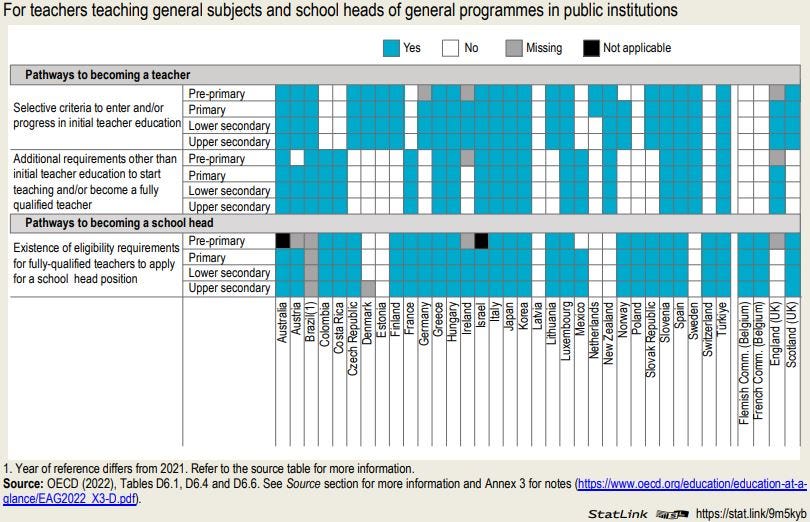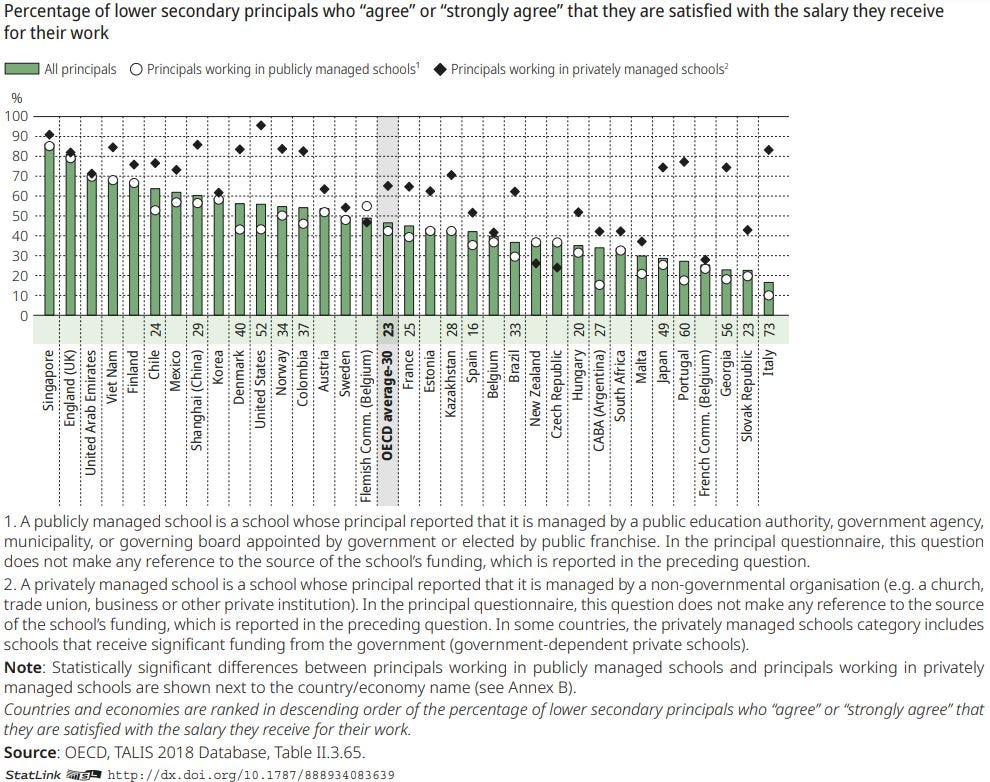To attract the best candidates to educational leadership, it's critical to offer attractive career pathways. This includes distinct career structures and competitive salary scales for school leaders that reflect their responsibilities and the challenges of their roles. Salaries and incentives should be carefully designed based on a deep understanding of their effects on attracting and retaining leaders, ensuring they are fairly rewarded for their pivotal role. Ensuring leadership positions are desirable and rewarding helps maintain a flow of motivated, skilled leaders who are prepared to enhance educational quality.
Education leader employment
Employment strategies for education leaders focus on attracting, developing and retaining talented individuals capable of driving school success.

Key messages
Employing strategic recruitment and meticulous selection procedures is vital for finding and hiring effective school leaders. Recruitment processes need to be fair and transparent, evaluating candidates' technical abilities and personal qualities, such as resilience, adaptability, and a strong dedication to student achievement, which are crucial for successful leadership.
Implementing reforms in education leadership roles requires careful planning, stakeholder engagement, and a clear understanding of the challenges and opportunities within the educational landscape. Building consensus and trust through transparent communication and collaboration is essential for the effective implementation of new policies and practices. This ensures policies are well-designed and capable of making leadership positions more attractive and sustainable.
Context
Pathways to becoming a school head
School head positions for public schools covering either primary, lower secondary general or upper secondary general programmes are open only to fully qualified teachers in nearly two-thirds of the countries and other participants with available data.
Pathways to becoming a teacher or school head, by level of education (2021)

School leaders’ salaries
While nearly half of principals (47%) report satisfaction with their salary across countries and economies participating in TALIS, the data also show significant variation across types of schools. On average across OECD countries and economies in TALIS, the proportion of principals who are satisfied with their salaries is 23 percentage points higher in privately managed schools (65%) than in publicly managed schools (42%).
Principals’ satisfaction with salary, by school type (2018)

Related publications
Programmes and projects
-
TALIS - the Teaching and Learning International Survey - is the world's largest international survey about teachers and school leaders.Learn more
-
PISA is the OECD's Programme for International Student Assessment. PISA measures 15-year-olds’ ability to use their reading, mathematics and science knowledge and skills to meet real-life challenges.Learn more
-
The OECD Indicators of Education Systems (INES) programme seeks to gauge the performance of national education systems through internationally comparable data.Learn more
-
The Education Policy Outlook is an analytical observatory that monitors the evolution of policy priorities and policy developments from early childhood education to adult education, mainly among OECD education systems, to provide a comparative understanding of how policies are evolving, and how they can be best implemented or improved over time.Learn more
-
The OECD’s programme on education and skills policy support policymakers in their efforts to achieve high-quality lifelong learning, which in turn contributes to personal development, sustainable economic growth, and social cohesion.Learn more
-
Since 2013, the OECD has gathered evidence on how school resource policies work in different contexts. The focus is now on digital resources to enable countries to learn from each other in the digital transformation of their education.Learn more







